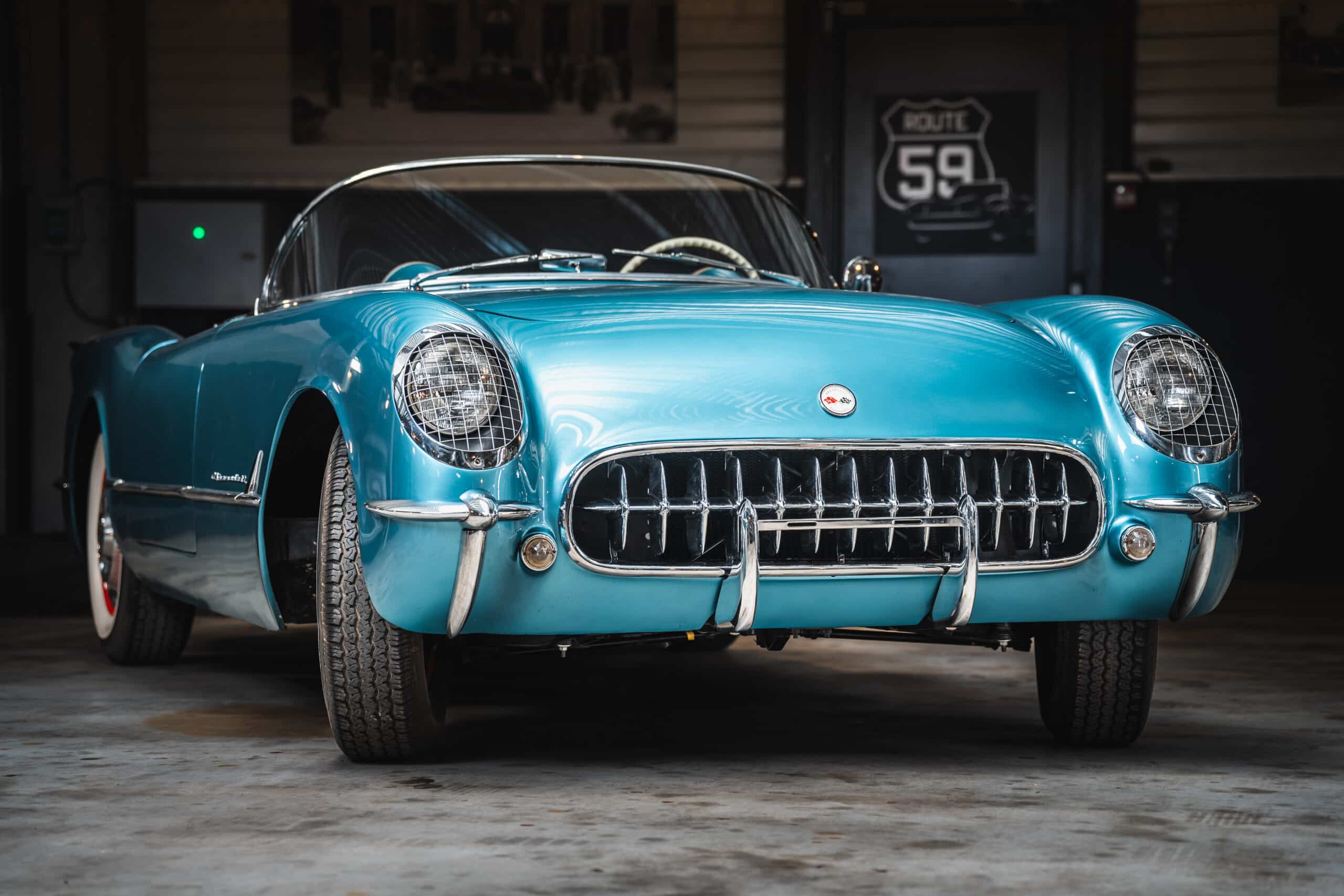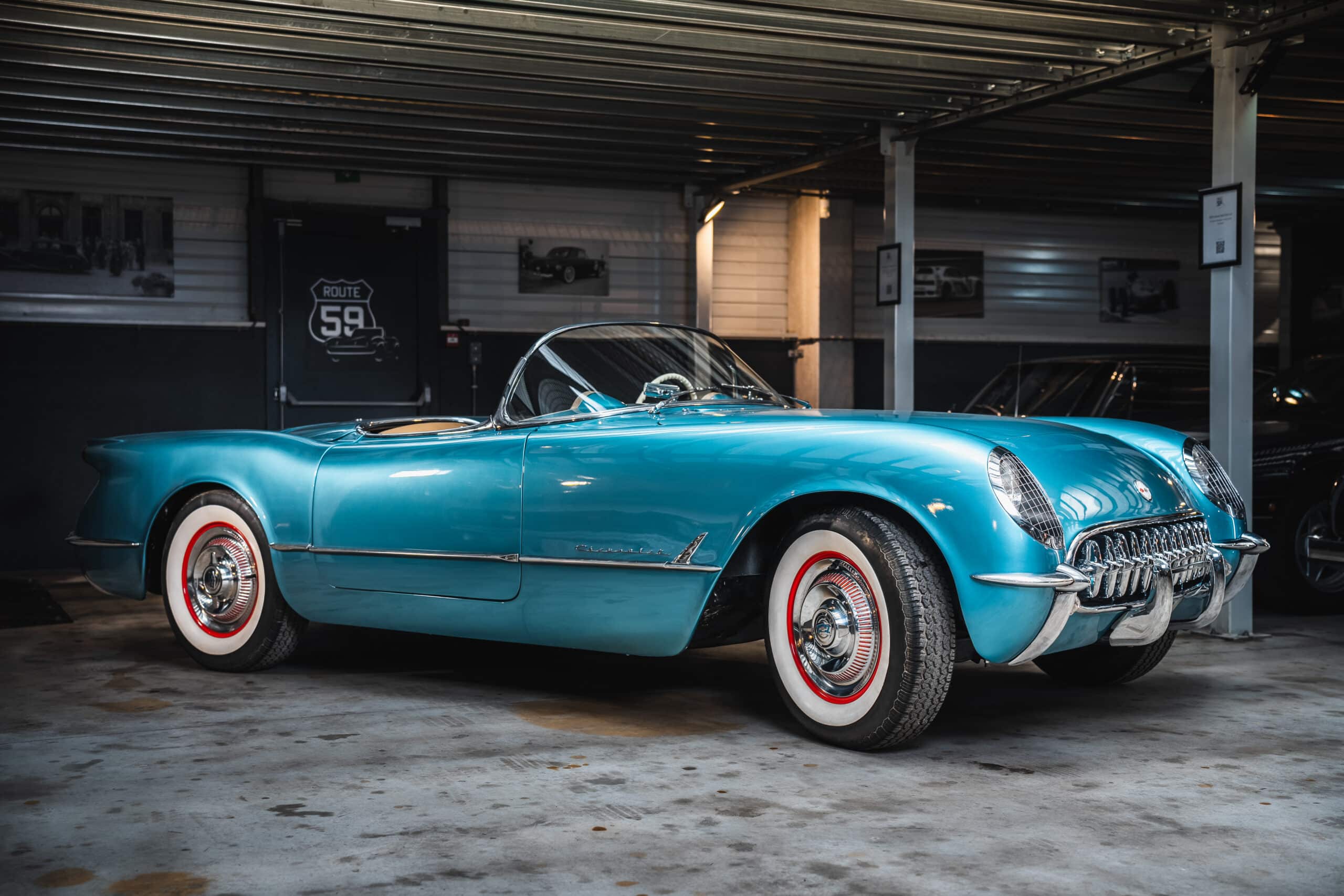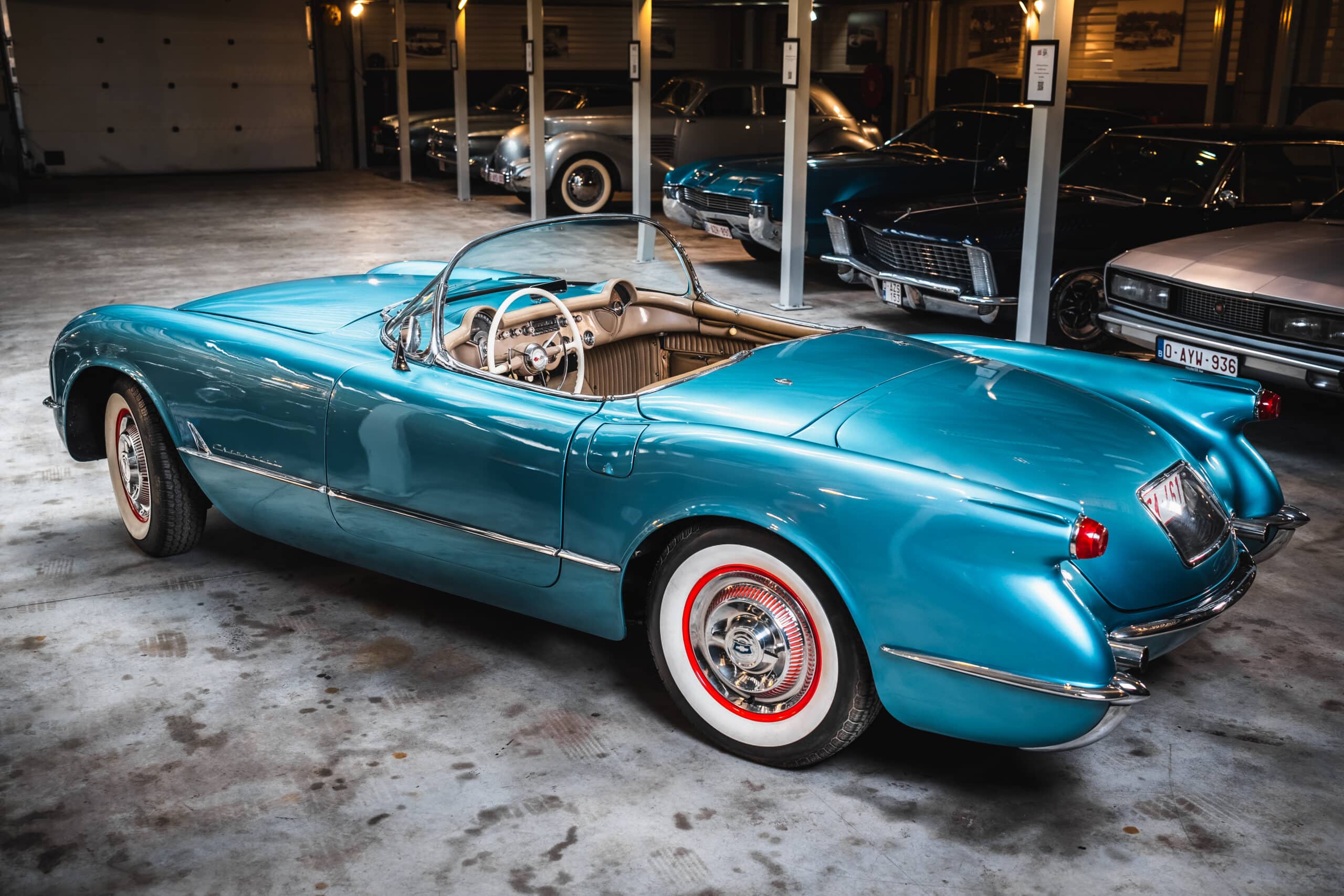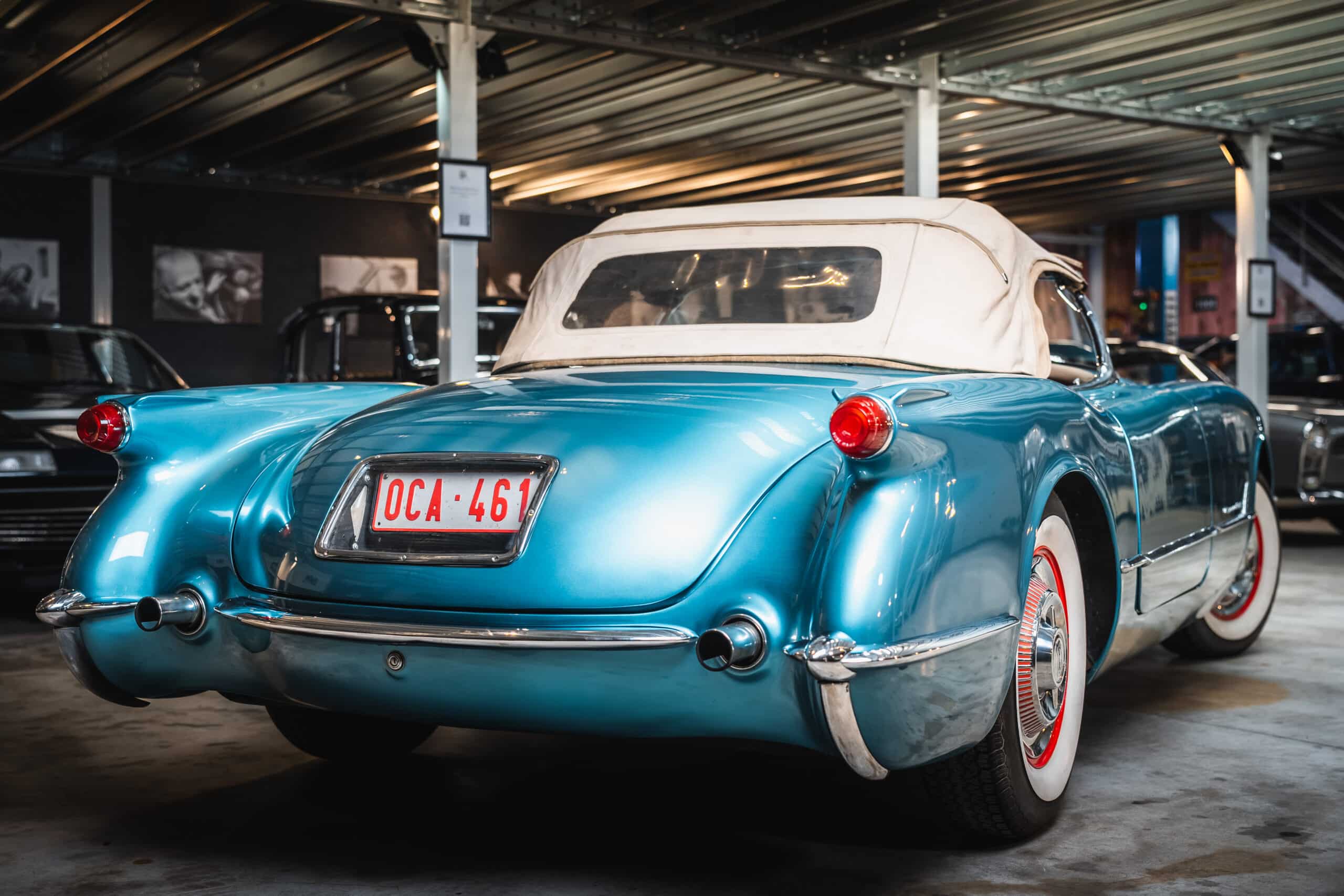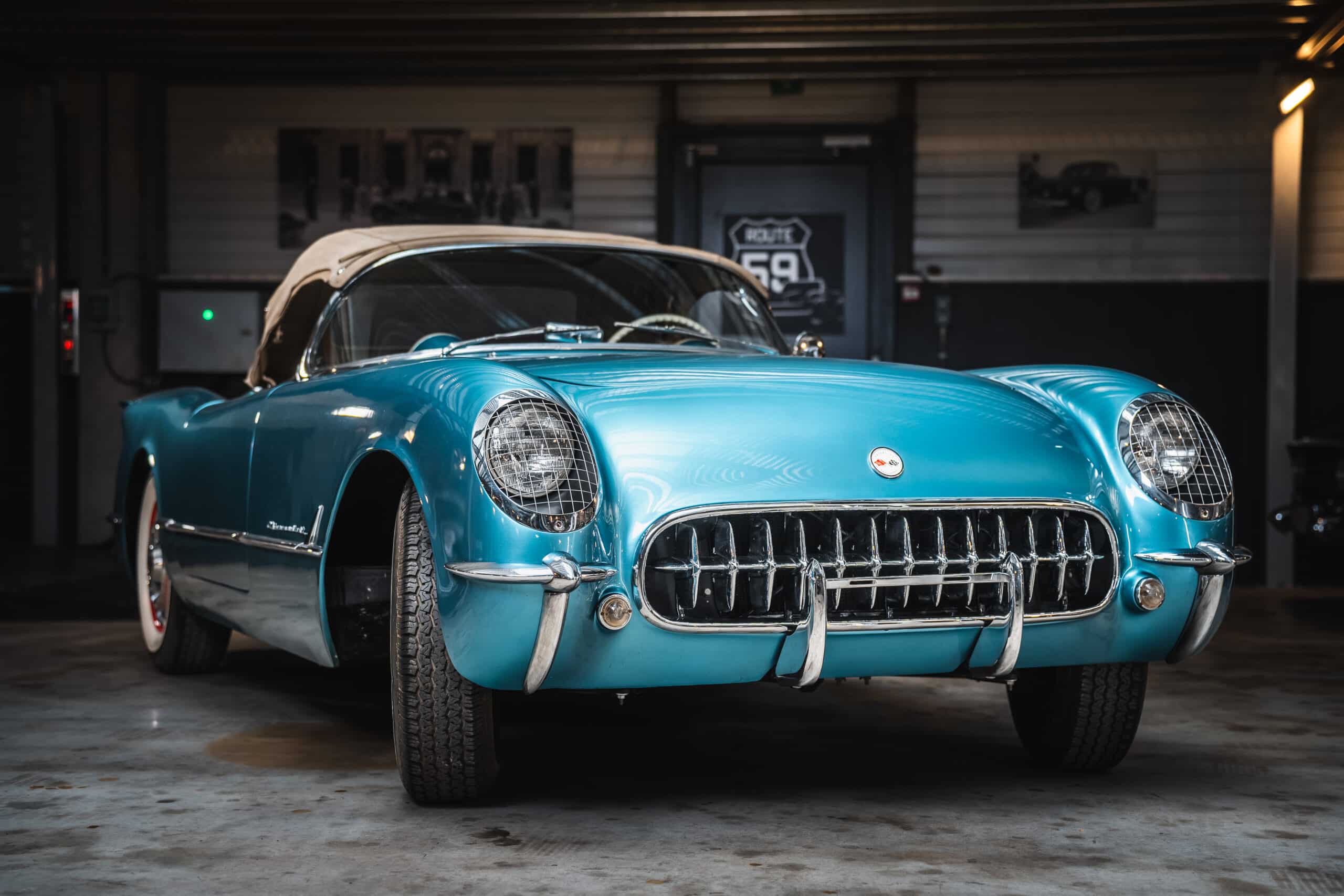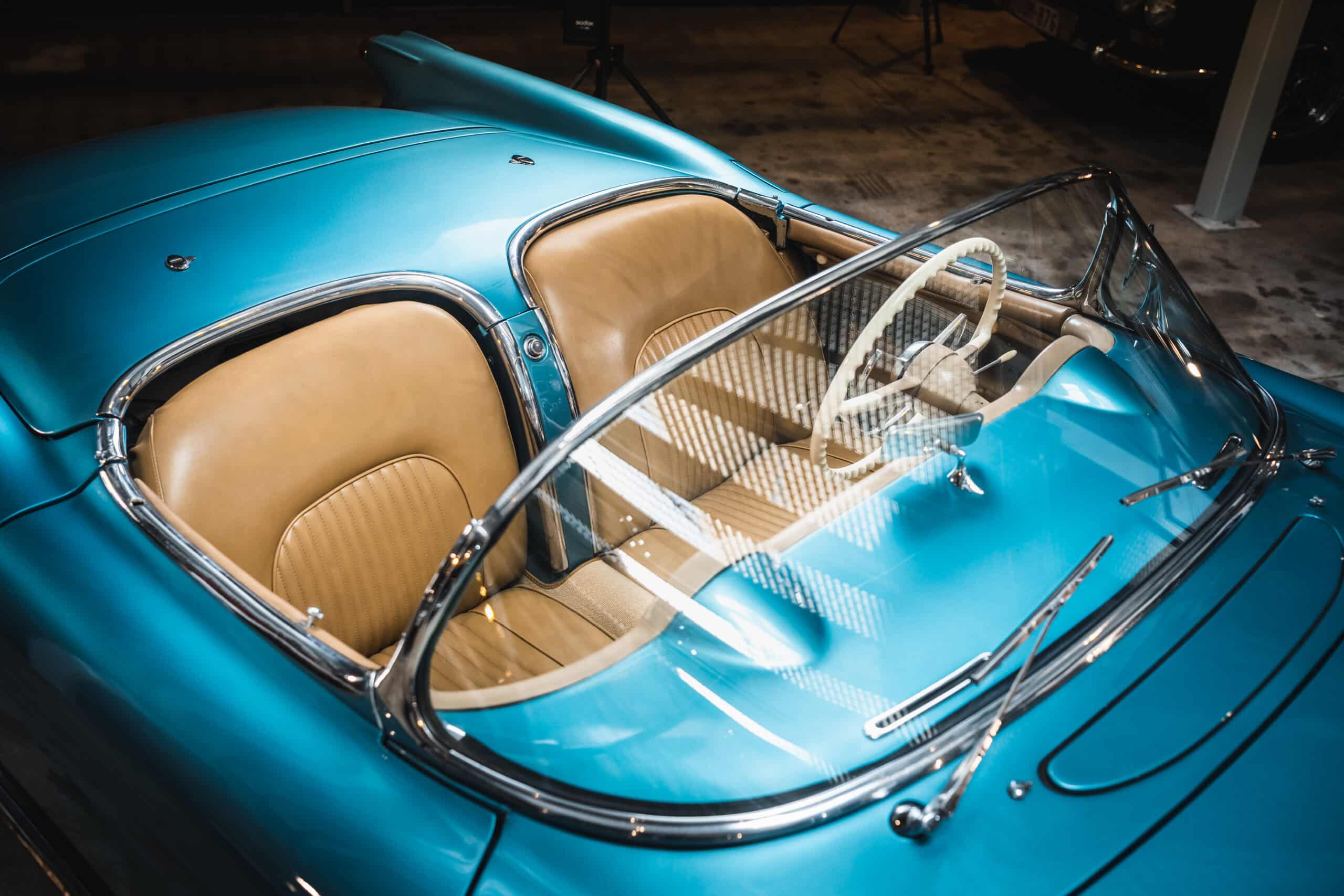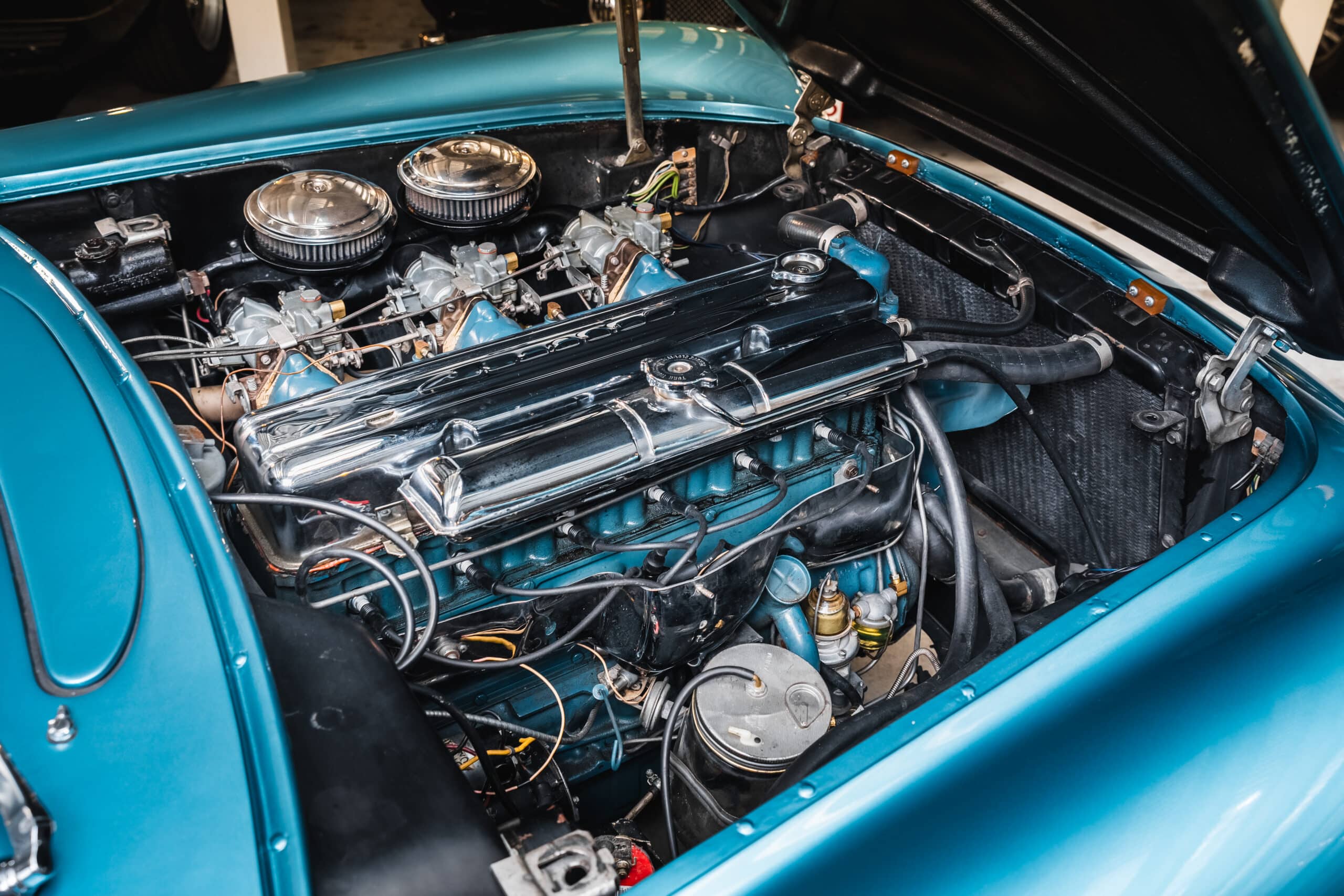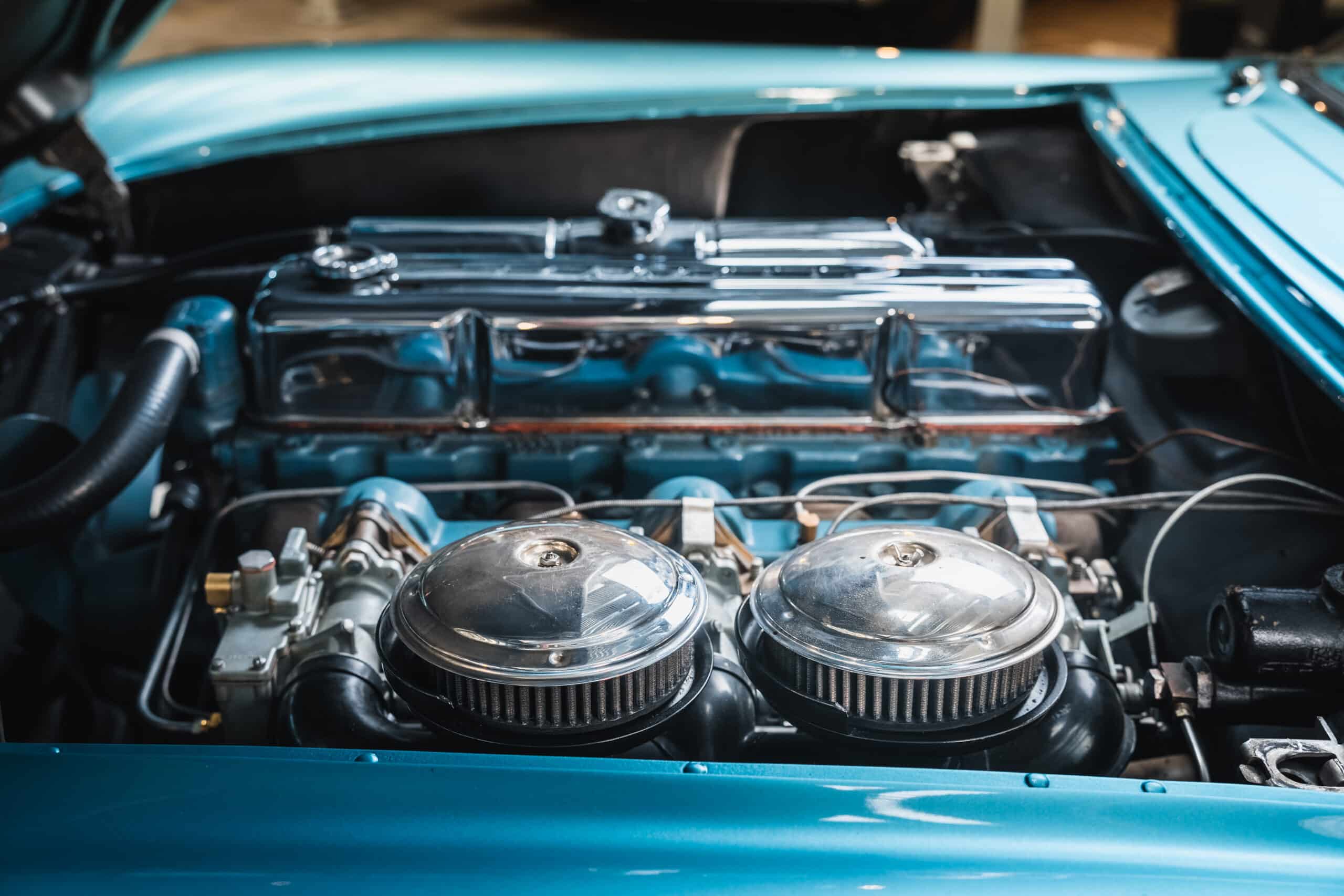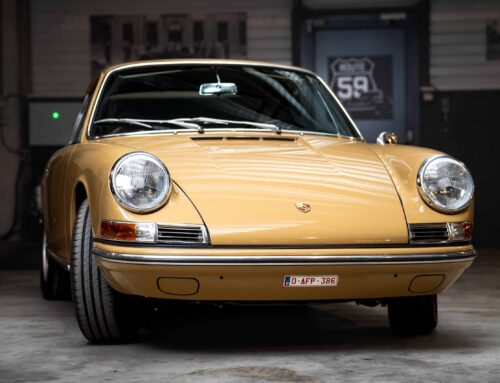Chevrolet Corvette C1
| Brand | Chevrolet |
| Model | Corvette C1 |
| Color | Blue |
| Transmission | 2-speed automatic |
| Pk | 150 ch |
| Year | 1954 |
| Price | Not for sale |
The Chevrolet Corvette is an icon of American automotive history and one of the most recognized and revered cars in the world. The first-generation Chevrolet Corvette (commonly known as the C1) was first presented in 1953 at the General Motors Motorama event at New York’s Waldorf-Astoria Hotel. The C1 Corvette was produced for nine years before being replaced by the second-generation Corvette, or C2, in 1962. Designed by legendary automotive designer Harley Earl, the Chevrolet Corvette draws its inspiration from many sources. Earl wanted to create a true American sports car, and he noticed all the European sports cars that American GIs brought home from service in World War II. He was also inspired by the Nash-Healey, a two-seater sports car from Nash Motors. Earl and his team created the “Opel Project” in the early 1950s, which became the original Corvette we know today. Another notable member of the Corvette team was Zora Arkus-Duntov, the Corvette’s chief engineer, commonly known as the “father of the Corvette”. Duntov joined the team after seeing the original car at the Motorama, and became the man responsible for many of the car’s innovations, its first racing successes and the implementation of the successful Grand Sport program. Among Duntov’s many achievements with the Corvette, one of the most important was to make it a proven sports car. Duntov and his team set a stock car record at the 1956 Pike’s Peak Hill Climb, and also set a new record at Daytona Beach by reaching 150 mph in the flying mile. Duntov’s Grand Sport program was launched in the final year of the Corvette C1, in 1962. This program aims to create a lightweight racing Corvette capable of competing with the established brands. Only five original Grand Sports were built with a 550-hp aluminum small-block V8 engine. These incredibly rare cars were not officially allowed to race by GM and ended up in the hands of private collectors. 1953: First attempt The very first production Chevrolet Corvette C1 rolled off an improvised assembly line in Flint, Michigan, in June 1953. The first batch of cars, limited to 300 units, was entirely covered in black canvas and featured the now iconic Polo White exterior color, as well as an equally iconic red interior. Under the hood, they were powered by a 3.8-liter in-line six-cylinder engine (no V8 yet) with three Carter carburetors, mechanical tappets and a high-lift camshaft. Dubbed “Blue Flame”, this engine developed 150 hp and was mated to a two-speed Powerglide automatic gearbox. Earl’s design for the Corvette C1 is beautiful and instantly recognizable. The Corvette Convertible’s styling is narrow and compact, featuring flowing lines from headlights to rear fenders, white-wall wheels, projecting taillights in classic 1950s style and a unique chrome grille. Instead of a steel body, GM uses fiberglass to shape the Corvette, one of the first instances of such extensive use of a revolutionary lightweight material at the time. 1954: Production expands 1954 sees a significant increase in Corvette production, with some 3,640 cars produced. General Motors also extends the Corvette’s color range (Sportsman Red, Black and Pennant Blue) and increases engine power to 155 hp. The model presented here is in perfect condition, totally restored a few years ago Key points :
- Imported from the USA in April 2009
- Completely repainted in 2010/2011
- One of the 300 Corvettes produced in 1954 in the “pennant blue” color (the only ones to feature a beige interior and hood).
- Recent work: new fuel pump + new filter
- Chassis/engine matching


